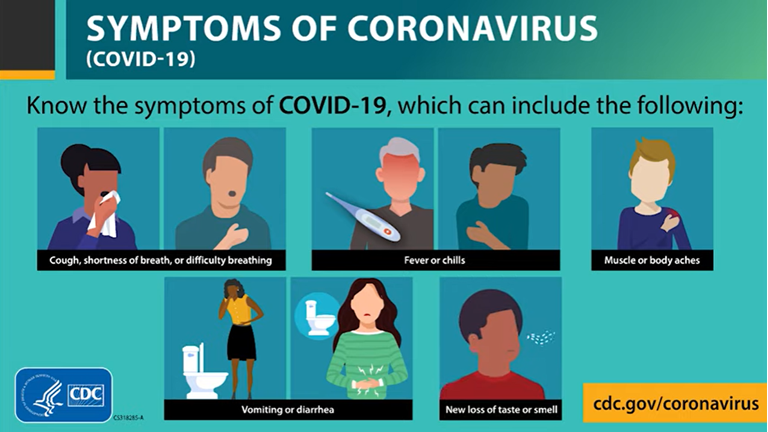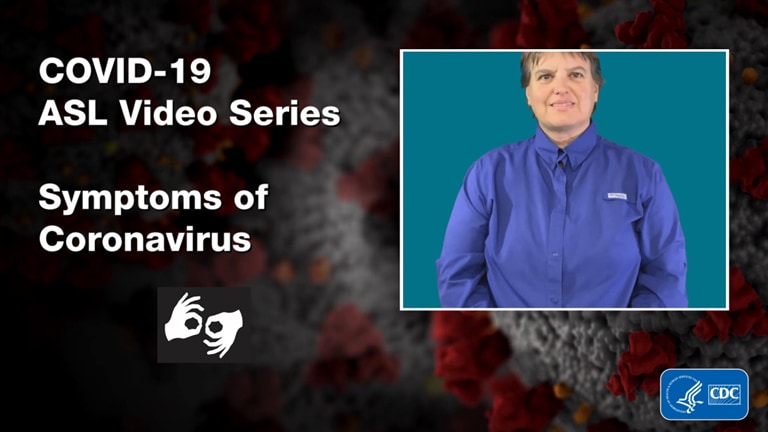Recommendations for Fully Vaccinated People
COVID-19 Homepage
Symptoms of COVID-19
People with COVID-19 have reported a wide range of symptoms ranging from mild symptoms to severe illness. Symptoms may appear 2-14 days after exposure to the virus. Anyone can have mild to severe symptoms. Possible symptoms include:
- Fever or chills
- Cough
- Shortness of breath or difficulty breathing
- Fatigue
- Muscle or body aches
- Headache
- New loss of taste or smell
- Sore throat
- Congestion or runny nose
- Nausea or vomiting
- Diarrhea
This list does not include all possible symptoms. Symptoms may change with new COVID-19 variants and can vary by person. CDC will continue to update this list as we learn more about COVID-19.
Feeling Sick?
Stay home and away from others (including people you live with who are not sick) if you have symptoms that aren’t better explained by another cause.
Seek health care promptly for testing and/or treatment if you have risk factors for severe illness; treatment may help lower your risk of severe illness.
When to Seek Emergency Medical Attention
Look for emergency warning signs* for COVID 19:
- Trouble breathing
- Persistent pain or pressure in the chest
- New confusion
- Inability to wake or stay awake
- Pale, gray, or blue-colored skin, lips, or nail beds, depending on skin tone
If someone is showing any of these signs, call 911 or call ahead to your local emergency facility. Notify the operator that you are seeking care for someone who has or may have COVID-19.
*This list is not all possible symptoms. Please call your medical provider for any other symptoms that are severe or concerning to you.
Influenza (Flu) and COVID-19 are both contagious respiratory illnesses, but they are caused by different viruses. COVID-19 is caused by infection with a coronavirus named SARS-CoV-2, and flu is caused by infection with influenza viruses. You cannot tell the difference between flu and COVID-19 by symptoms alone because some of the symptoms are the same. Some PCR tests can differentiate between flu and COVID-19 at the same time. If one of these tests is not available, many testing locations provide flu and COVID-19 tests separately. Talk to a healthcare provider about getting tested for both flu and COVID-19 if you have symptoms.
Learn moreResources
Search for and find historical COVID-19 pages and files. Please note the content on these pages and files is no longer being updated and may be out of date.
- Visit archive.cdc.gov for a historical snapshot of the COVID-19 website, capturing the end of the Federal Public Health Emergency on June 28, 2023.
- Visit the dynamic COVID-19 collection to search the COVID-19 website as far back as July 30, 2021.
To receive email updates about COVID-19, enter your email address:

